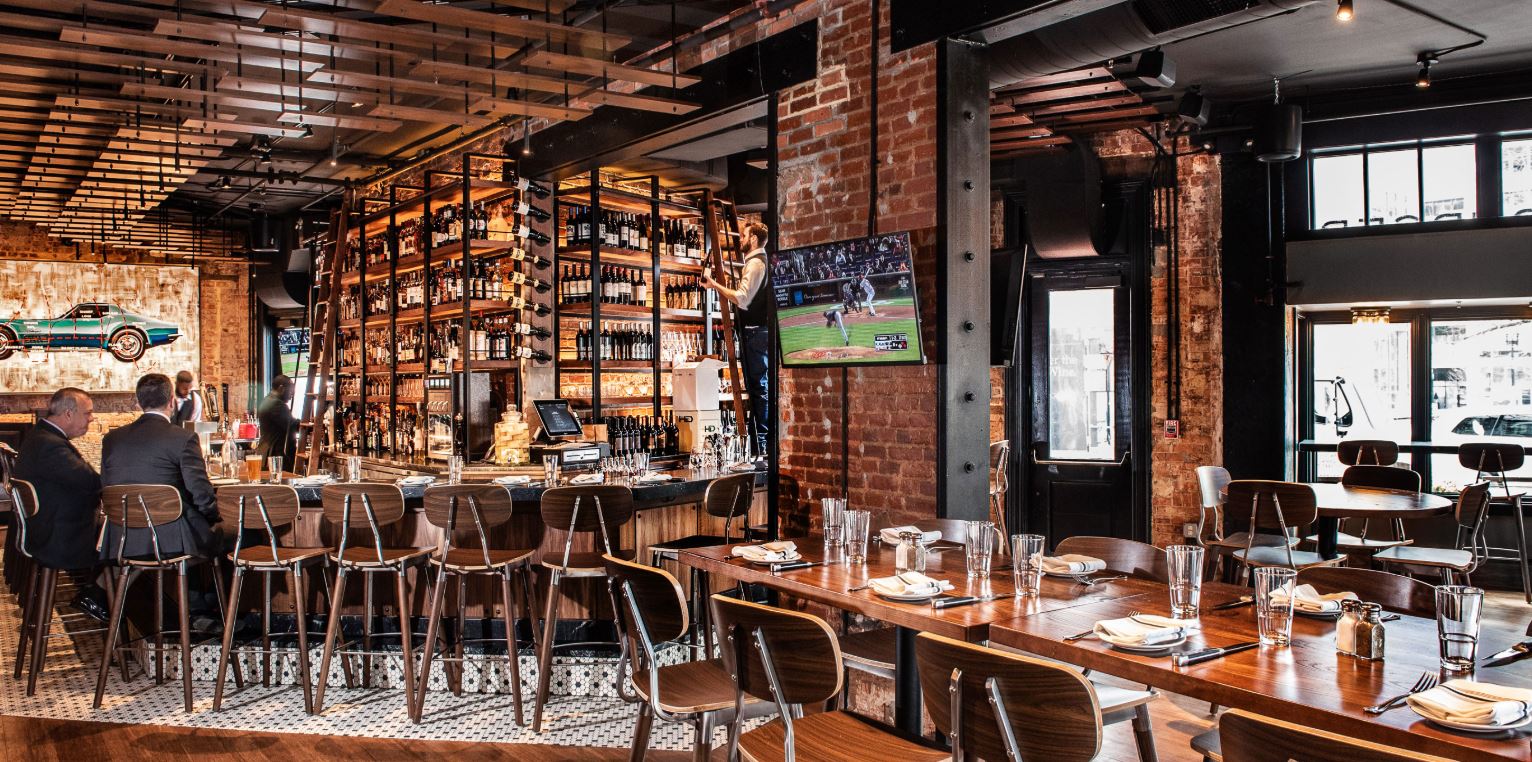Savor Authentic Asian Food With a Pan-Asian Twist for a Culinary Adventure
Starting a cooking trip through genuine Eastern cuisine, enhanced with a Pan-Asian twist, supplies a distinct chance to explore the abundant tapestry of flavors that define the area's diverse culinary customs. This experience invites you to savor the splendid equilibrium of tastes-- pleasant, salty, spicy, and sour-- balanced by fragrant natural herbs and spices. Imagine the innovative fusion of Thai curry and ramen or the unanticipated pleasure of sushi burritos. As you contemplate these luring dishes, consider the social stories and historical influences that form them, each bite using a story waiting to be discovered.

Checking Out Pan-Asian Flavors
In the world of global gastronomy, Pan-Asian food stands out for its remarkable variety and the unified interplay of tastes from various Oriental cultures. This cooking strategy celebrates the abundant customs and one-of-a-kind active ingredients discovered throughout the continent, developing a tapestry of tastes that is both enjoyable and intriguing. Secret to Pan-Asian food is its capacity to balance different flavors-- sweet, salty, spicy, and sour-- while highlighting the freshness and quality of each active ingredient.
From the umami-rich soy sauce of Japan to the fiery chili peppers of Thailand, Pan-Asian food supplies an extensive scheme of flavors. These aspects are typically incorporated in innovative means, enhancing meals with layers of complexity. For circumstances, using aromatic herbs such as lemongrass and cilantro, usual in Vietnamese and Thai cuisine, adds a rejuvenating brightness to recipes, while the consolidation of coconut milk delivers a creamy, rich appearance.
The emphasis on fresh fruit and vegetables and fragrant flavors makes sure that each meal is not just a banquet for the taste but likewise for the detects. Pan-Asian food invites restaurants to embark on a cooking journey, discovering the large and differed landscapes of Asian gastronomy with every bite.
Combination Recipes to Try
While Pan-Asian cuisine is celebrated for its typical flavors, the modern culinary landscape is increasingly welcoming combination recipes that mix these classic components with impacts from other areas. This ingenious strategy not just honors the rich heritage of Asian cooking arts but likewise presents novel taste experiences that appeal to contemporary tastes.
A prime example of such a blend meal is the Korean-Mexican taco, where seasoned bulgogi beef is covered in a cozy tortilla, covered with kimchi and a hot gochujang-infused salsa. This combination weds the bold, full-flavored flavors of Korea with the vivid, fresh elements of Mexican food. Similarly, sushi burritos have obtained popularity, amalgamating the delicate virtuosity of Japanese sushi with the passionate, hand-held convenience of a burrito, frequently featuring blend components like tempura shrimp and avocado with a drizzle of wasabi mayo.
One more notable dish is Thai curry ramen, which instills the creamy, fragrant seasonings of Thai curry into the soothing broth of traditional Japanese ramen, producing a harmonious blend that tantalizes the senses. These blend dishes prolong beyond simple novelty; they stand for a culinary discussion between cultures, motivating expedition and advancement in the globe of Pan-Asian cuisine.
Essential Active Ingredients and Seasonings
To truly appreciate Pan-Asian cuisine, one must understand the important components and spices that develop its foundation. This varied culinary style draws from an abundant tapestry of Asian customs, utilizing a harmonious blend of flavors and appearances.
Fragrant elements are pivotal, with garlic, lemongrass, and ginger being common throughout different Pan-Asian recipes. These ingredients give an aromatic base that improves the complexity of flavors. Spices such as star anise, cardamom, and cinnamon present heat and personality, echoing influences from regions like China and India.

Food Preparation Techniques and Tips
Mastering the art of Pan-Asian cuisine requires familiarity with its distinctive cooking methods, each adding to the lively tapestry of tastes this cooking tradition is celebrated for. Central to these techniques is the stir-fry, a rapid cooking method that maintains the dietary stability and vivid shades of components. Utilizing a frying pan, the stir-fry method that site permits even warm distribution, important for achieving the particular appearance and taste balance of Pan-Asian dishes.
One more basic strategy is steaming, specifically prevalent in Chinese food. This gentle method keeps the all-natural tastes and nutrients of active ingredients, making it ideal for seafood and veggies. Dumplings, a cherished staple, commonly profit from steaming, resulting in soft, delicious appearances.
Barbecuing, likewise integral, passes on great smoky midsts to recipes such as Korean bulgogi or Japanese yakitori (Romantic restaurants Islamabad). This method typically involves marinading components, allowing tastes to penetrate deeply before food preparation over an open flame or warmer
Finally, grasping the art of balancing flavors-- pleasant, sour, salted, bitter, and umami-- is important. Effectively layering these elements can raise a dish from ordinary to extraordinary, providing a complicated and pleasing culinary experience that personifies the significance of Pan-Asian food.
Dining Experiences Worldwide
Around the world, browse around this web-site Pan-Asian food provides an unrivaled dining experience, celebrated for its abundant tapestry of tastes and lively discussions. This culinary sensation has transcended cultural limits, capturing the hearts and tastes of food lovers worldwide. In worldwide cities fresh York, London, and Sydney, Pan-Asian restaurants offer as fusions where culinary practices from Thailand, Japan, China, and beyond converge, supplying restaurants with an eclectic mix of meals that highlight the region's variety.
The worldwide charm of Pan-Asian food lies in its ability to provide both credibility and innovation. Cooks skillfully marry typical ingredients such as lemongrass, soy sauce, and miso with modern strategies, causing recipes that are both acquainted and refreshingly brand-new. This combination allows diners to start a culinary trip that respects heritage while embracing modernity.
Moreover, eating experiences are raised with thoughtfully created environments that mirror the ethos of Pan-Asian looks. From minimalist Japanese-inspired insides to dynamic Thai-themed areas, each restaurant supplies a distinct ambiance that matches the cooking offerings. As a result, clients are not just eating a dish yet partaking in a cultural experience, making Pan-Asian eating an absolutely international phenomenon.
Final Thought
The expedition of Pan-Asian cuisine uses an extensive understanding of the intricate interaction of tastes and cooking customs across Asia. By accepting fusion dishes such as Thai curry ramen and sushi burritos, the cooking journey not only highlights the versatility of conventional ingredients however additionally showcases ingenious contemporary methods. This gastronomic journey, enriched by cooking methods and crucial spices, gives a special possibility to appreciate the cultural diversity and cooking artistry that define Pan-Asian food on an international range.
Embarking on a culinary journey with genuine Oriental cuisine, improved with a Pan-Asian spin, provides a special chance to explore the abundant tapestry of flavors that specify the region's varied culinary customs.In the world of worldwide gastronomy, Pan-Asian food stands out for its impressive variety and the unified interaction of tastes from various Oriental societies. Trick to Pan-Asian cuisine is its capacity to stabilize contrasting tastes-- wonderful, salted, spicy, and sour-- while Homepage highlighting the quality and top quality of each active ingredient.
